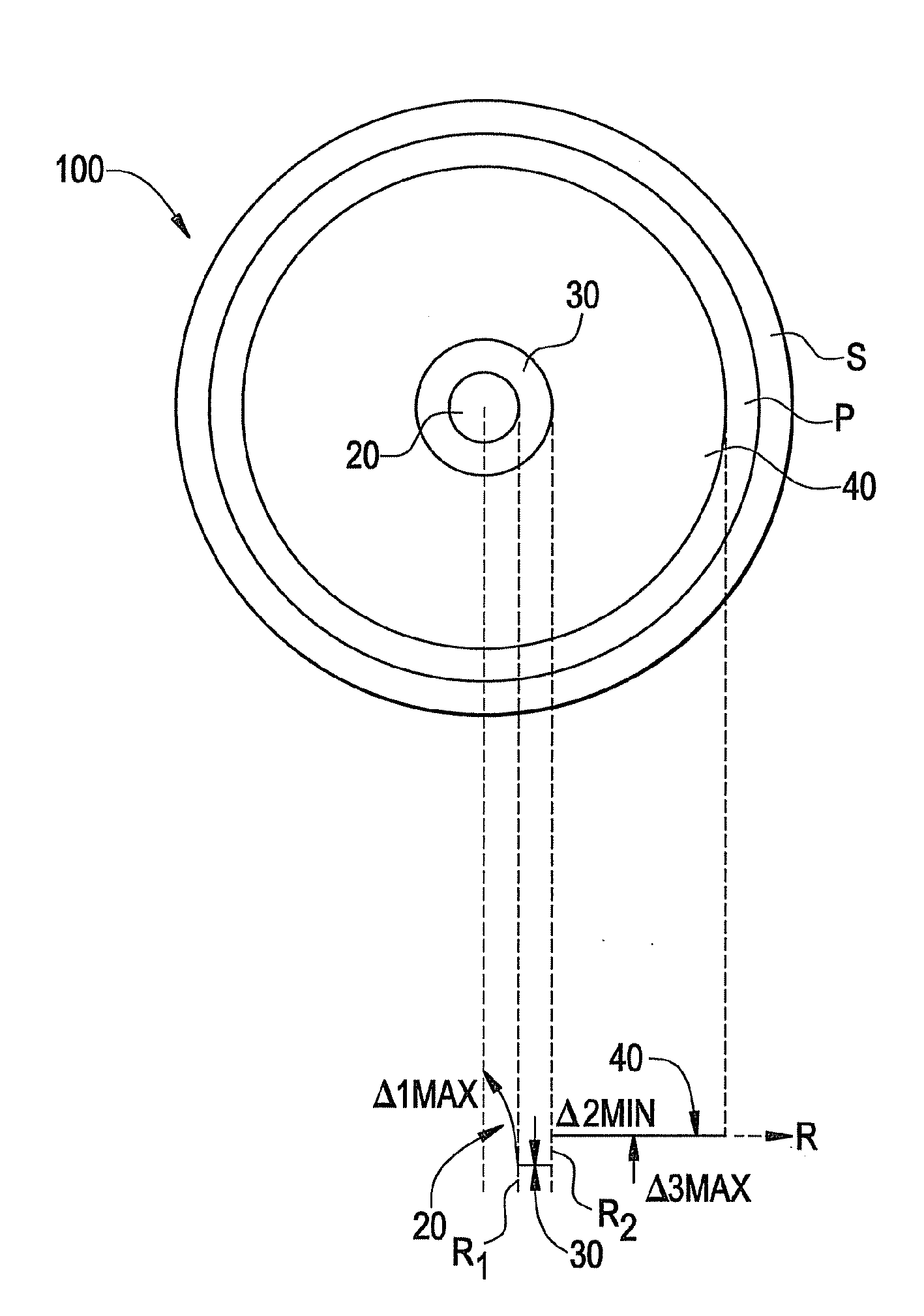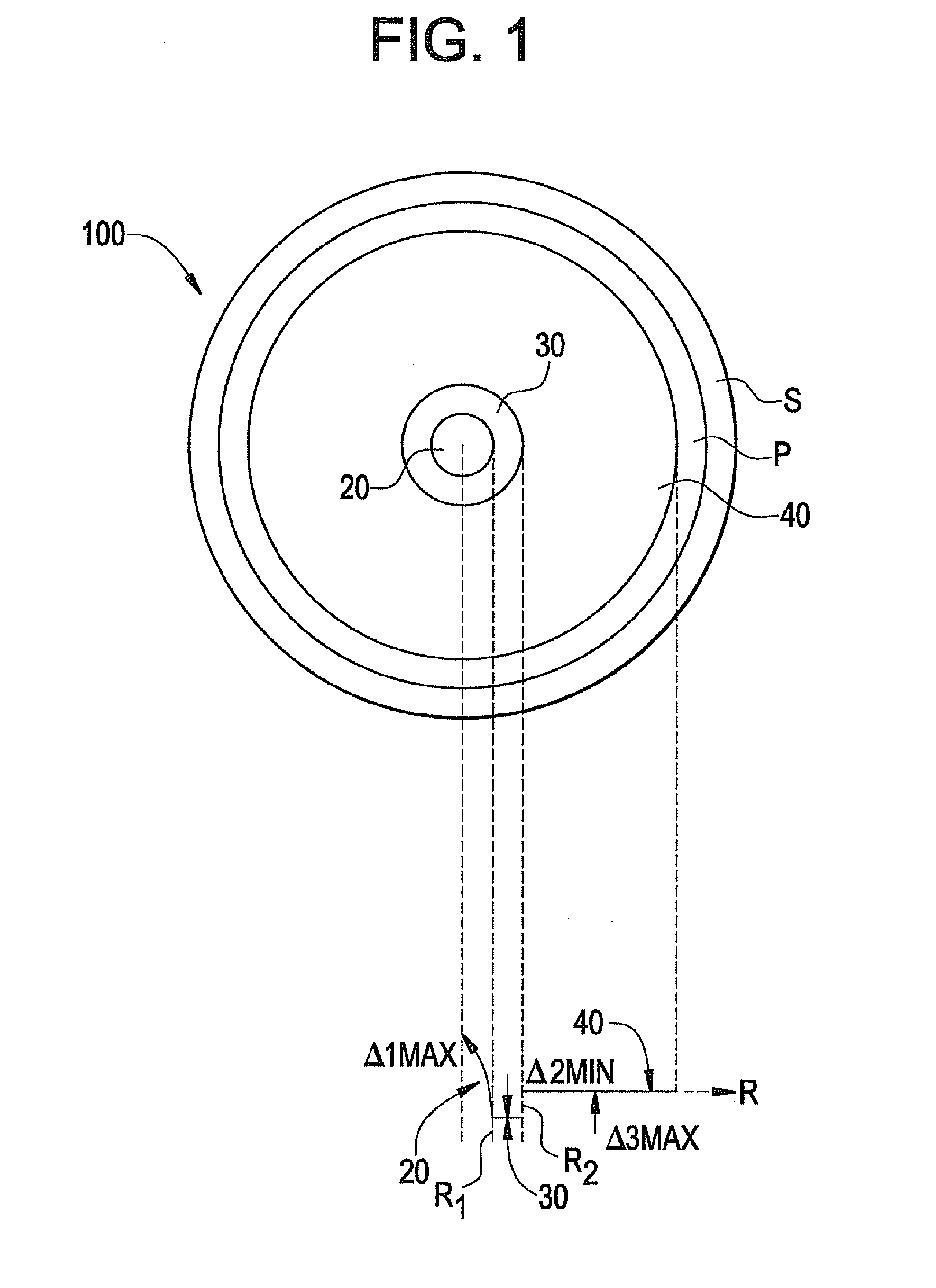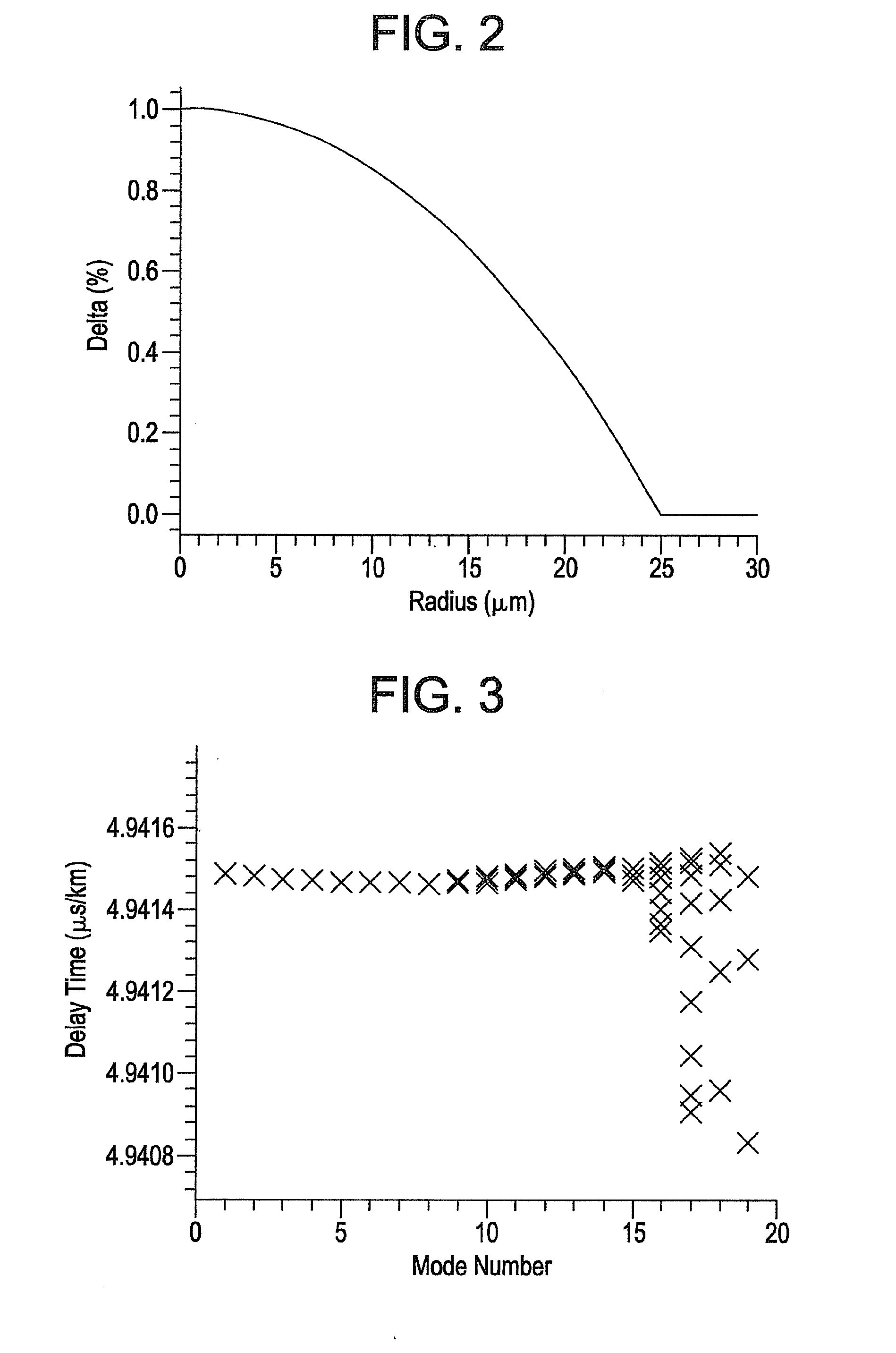Multimode Fiber With At Least Dual Cladding
a multi-mode fiber and cladding technology, applied in the field of optical fibers, can solve the problems of limiting the bandwidth of multi-mode fibers, reducing the losses due to micro-bending and cladding absorption, and high loss
- Summary
- Abstract
- Description
- Claims
- Application Information
AI Technical Summary
Benefits of technology
Problems solved by technology
Method used
Image
Examples
example 1
[0055]FIG. 6 schematically illustrates a refractive index profile corresponding to an embodiment of the invention wherein the cladding is up-doped with GeO2 from a radius of 35 μm to the outermost edge of the cladding, wherein Δ3MAX is 0.2%, Δ2MIN is 0%, and the fiber contains no downdopants, such as fluorine. The differential mode delay time versus mode number for the optical fiber profile of FIG. 6 is illustrated in FIG. 7. The highest order modes (e.g., those with mode numbers from 16 to 19) each show a differential mode delay time that is limited to within about 0.12 ns / km.
example 2
[0056]FIG. 8 schematically illustrates a refractive index profile corresponding to an embodiment of the invention wherein the cladding is up-doped with GeO2 from a radius of 35 μm to a radius of 45 μm (i.e., a single up-doped ring), wherein Δ3MAX is 0.25%, Δ2MIN is 0%, and the fiber contains no downdopants, such as fluorine. This fiber index profile includes a diffused tail in the fiber core, which is a distortion from an ideal alpha profile. The differential mode delay time versus mode number for the optical fiber profile of FIG. 8 is illustrated in FIG. 9. The highest order modes (e.g., those with mode numbers from 16 to 19) each show a differential mode delay time that is less than 0.10 ns / km.
example 3
[0057]FIG. 10 schematically illustrates a refractive index profile corresponding to an embodiment of the invention wherein the cladding is up-doped with GeO2 from a radius of 35 μm to a radius of 45 μm and again from a radius of 50 μm to a radius of 60 μm (i.e., dual up-doped rings), wherein Δ3MAX is 0.25%, Δ2MIN is 0%, and the fiber contains no downdopants, such as fluorine. This fiber index profile includes a diffused tail in the fiber core, which is a distortion from an ideal alpha profile. The differential mode delay time versus mode number for the optical fiber profile of FIG. 10 is illustrated in FIG. 11. The highest order modes (e.g., those with mode numbers from 16 to 19) each show a differential mode delay time that is less than 0.10 ns / km.
PUM
 Login to View More
Login to View More Abstract
Description
Claims
Application Information
 Login to View More
Login to View More - R&D
- Intellectual Property
- Life Sciences
- Materials
- Tech Scout
- Unparalleled Data Quality
- Higher Quality Content
- 60% Fewer Hallucinations
Browse by: Latest US Patents, China's latest patents, Technical Efficacy Thesaurus, Application Domain, Technology Topic, Popular Technical Reports.
© 2025 PatSnap. All rights reserved.Legal|Privacy policy|Modern Slavery Act Transparency Statement|Sitemap|About US| Contact US: help@patsnap.com



